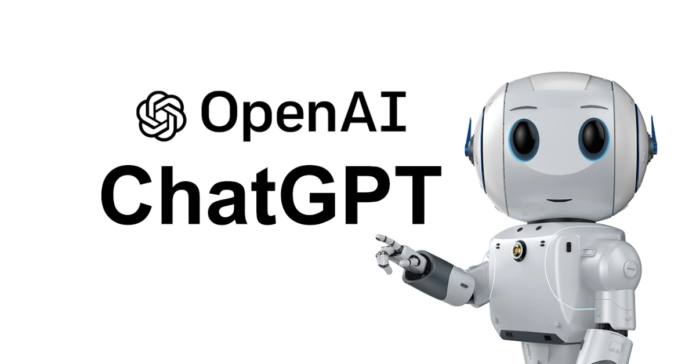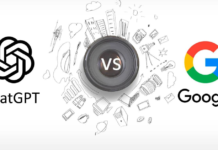
Natural Language Processing (NLP) is a rapidly growing field of artificial intelligence that aims to enable machines to understand and interact with human language. ChatGPT is one such NLP model that has made remarkable progress in generating coherent and human-like responses. In this article, we will explore the technical aspects of ChatGPT, its various applications, limitations and challenges it faces, and its potential to transform the way we communicate with technology.
Technical Aspects of ChatGPT
ChatGPT, as a transformer-based language model, is built on the transformer architecture. With a vast number of parameters, it can learn patterns in the input text data to predict the next word or sequence of words in a given sentence. Moreover, the model learns without being explicitly programmed using unsupervised learning, which requires large volumes of text data to train the model.
To train ChatGPT, diverse data sources such as books, articles, social media posts, and user-generated content are required. The more data the model is trained on, the better it becomes at generating coherent and human-like responses. However, some concerns are present regarding the quality of the data used to train the model and the potential biases that may be present.
Despite these concerns, ChatGPT has achieved remarkable performance on various language processing benchmarks, such as the General Language Understanding Evaluation (GLUE) and the SuperGLUE benchmark. These benchmarks measure the model’s ability to understand language and generate coherent responses. In fact, ChatGPT has achieved state-of-the-art performance on these benchmarks, outperforming other models and even human performance in some cases.
Applications of ChatGPT
Chatbots for Customer Service
Chatbots have become an indispensable tool for companies to handle a large volume of customer queries and provide quick and efficient responses. ChatGPT-based chatbots can understand and respond to customer queries in natural language, making the interaction more seamless and human-like. They can also be trained to understand different accents and dialects, making them more versatile and effective. Moreover, ChatGPT-powered chatbots can learn from previous interactions and improve their responses over time, which allows companies to provide a better customer experience and increase satisfaction. Chatbots can also handle multiple conversations simultaneously, making them more efficient than human agents, which reduces workload and improves response times and customer experience. Overall, ChatGPT-powered chatbots have revolutionized the customer service industry by providing quick and efficient responses to customer queries while reducing workload and improving customer satisfaction.
Machine Translation with ChatGPT
ChatGPT has also shown promising results in machine translation, which has the potential to break down language barriers and facilitate communication between individuals who speak different languages. With its ability to generate high-quality text, ChatGPT can accurately translate complex sentences and technical jargon. However, like all machine translation models, it still struggles with nuances and colloquialisms in language. But with continued research and development, ChatGPT’s language generation abilities may overcome these challenges and help bridge the gap between languages and cultures.
Content Creation and Curation with ChatGPT
ChatGPT has significant potential in the field of content creation and curation. The model can be used to generate high-quality content for a variety of applications, such as social media, news articles, and marketing materials. With the ability to analyze vast amounts of data and generate coherent responses, ChatGPT can create content that is engaging and informative. Traditionally, creating content requires a significant amount of research, writing, and editing. With ChatGPT, the process can be streamlined and automated, allowing organizations to create content faster and more efficiently. In addition, ChatGPT can assist in content curation by analyzing and summarizing large volumes of information, providing insights into customer preferences and sentiment.
However, there are also concerns regarding the use of ChatGPT in content creation and curation. As with any AI technology, there is a risk of bias and inaccuracies in the generated content. There is also a risk of the content being used to spread misinformation or propaganda. Therefore, it is crucial to carefully monitor and evaluate the content generated by ChatGPT and ensure it aligns with ethical and journalistic standards.
Research and Development with ChatGPT
Furthermore, ChatGPT has opened up new avenues for research and development in natural language processing and artificial intelligence. Researchers are exploring new applications for ChatGPT in areas such as healthcare, education, and entertainment. One promising area of research is using ChatGPT for personalized healthcare, which has the potential to improve patient outcomes and reduce healthcare costs. ChatGPT is also being used in education to create personalized learning experiences for students, which has the potential to improve learning outcomes and make education more accessible to a wider range of learners. In the entertainment industry, ChatGPT is being used to generate scripts for movies, TV shows, and video games. However, there are concerns that this could also lead to a loss of creativity and originality in the industry.
Limitations and Challenges of ChatGPT
Bias and Ethics Concerns
One of the major concerns with ChatGPT is the potential for bias in the language it generates. This is because the model is trained on large datasets of text, which may contain inherent biases or reflect societal prejudices. If these biases are not accounted for, ChatGPT may perpetuate or even amplify them in its responses.
Moreover, there are also ethical concerns surrounding the use of ChatGPT in certain contexts. For example, if ChatGPT is used to generate news articles or other forms of content, there is a risk that it may be used to spread false or misleading information. Additionally, there are concerns about the potential use of ChatGPT for malicious purposes, such as generating convincing but fake messages to manipulate individuals or organizations.
To address these concerns, it is essential to carefully consider the ethical implications of using ChatGPT and other AI language models. This may involve developing guidelines for the responsible use of AI, as well as ongoing monitoring and evaluation of the impact of ChatGPT on different domains.
Overall, while ChatGPT and other AI language models hold great potential for a wide range of applications, it is essential to approach their development and use them with caution and consideration for the potential risks and ethical implications involved.
Overreliance on Training Data
One challenge with ChatGPT is its overreliance on training data. The model is trained on vast amounts of text data from the internet, which can lead to biases and inaccuracies in the responses it generates. Additionally, if the model encounters text that is not present in its training data, it may struggle to generate coherent responses.
For example, if ChatGPT is trained on text primarily written by men, it may struggle to generate responses that are inclusive of diverse perspectives and experiences. This can perpetuate biases and inequalities in the language used by the model.
Another issue with overreliance on training data is that it can lead to the generation of fake or misleading information. If the model is trained on inaccurate or biased information, it may generate responses that perpetuate these inaccuracies.
To address these challenges, it is important for developers to carefully curate the training data used to train ChatGPT and to continuously monitor the model’s responses to ensure they are accurate, unbiased, and ethical. Additionally, researchers are exploring ways to develop more robust language models that can generate coherent and accurate responses without relying heavily on training data.
Challenges in Generating Coherent and Logical Responses
One of the significant challenges of ChatGPT is generating coherent and logical responses. Despite its impressive language generation capabilities, the model can still produce nonsensical or irrelevant responses, particularly when it encounters complex or ambiguous input.
One reason for this challenge is that ChatGPT does not fully understand the context of the text it generates. The model primarily relies on statistical patterns in the input data to generate responses. As a result, it may fail to consider the broader context of the conversation, leading to incoherent or irrelevant responses.
Moreover, the model may struggle to produce responses that are consistent with the speaker’s intent or the overall tone of the conversation. This is particularly challenging for conversations that involve multiple speakers or complex topics that require a deep understanding of the subject matter.
Despite these challenges, ChatGPT’s language generation capabilities remain among the most advanced in the field of AI, with the potential to transform a range of applications, from customer service chatbots to content creation and curation.
Future Prospects and Directions for ChatGPT
Despite the challenges and limitations, ChatGPT shows great promise for the future of natural language processing and AI. As research continues, there are several potential directions that ChatGPT could take.
One area of development is improving the model’s ability to generate coherent and logical responses. While ChatGPT has made significant progress in generating realistic language, it still struggles with maintaining logical coherence in longer responses. One possible solution is to incorporate knowledge graphs or other structured data sources to provide context and improve the model’s understanding of concepts and relationships.
Another potential direction for ChatGPT is to explore more complex and nuanced forms of language understanding, such as sarcasm, humor, and emotional expression. This could be achieved through incorporating additional contextual cues and training data, as well as developing more sophisticated algorithms for language analysis.
In addition to improving the technical capabilities of ChatGPT, there is also a need for greater attention to the ethical implications of its use. As the model becomes more advanced and widely deployed, there is a risk of perpetuating bias and harmful stereotypes. To mitigate these risks, researchers and developers must be vigilant in selecting and curating training data, as well as developing methods for detecting and addressing bias in the model’s outputs.
Overall, the potential of ChatGPT and natural language processing is immense, and we are excited to see how this technology will develop and evolve in the years to come. As we continue to develop and improve AI language models, we must prioritize ethical considerations and ensure that we use these tools for the greater good.









